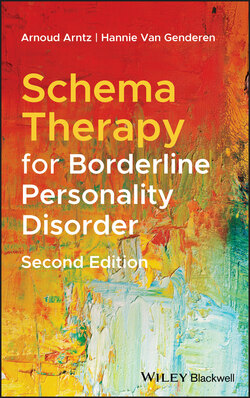Читать книгу Schema Therapy for Borderline Personality Disorder - Hannie van Genderen - Страница 10
Preface
ОглавлениеSchema therapy is a relatively new integrative psychotherapy based on cognitive models and offers an effective treatment of borderline personality disorder (BPD). Several trials have now documented its effectiveness and cost‐effectiveness compared to psychodynamic treatment and treatment as usual. Moreover, dropout from treatment is consistently low, indicating that schema therapy is well accepted by patients.
This book offers a practical guide for therapists to conduct schema therapy with BPD patients. Building upon Jeffrey Young's schema mode model, Young's schema therapy, and insights from Beckian cognitive therapy and experiential methods, it offers a conceptual model of BPD, a treatment model, and a wealth of methods and techniques for treating BPD patients. The treatment not only addresses the DSM BPD criteria‐related problems, but also the psychopathological personality features underlying the symptoms, like attachment problems, punitive conscience, inadequately processed childhood traumas and so on. Research has demonstrated that patients improve in all these aspects, including on the level of automatic information processing.
The authors equate their treatment to blind simultaneous chess playing in a pinball machine, meaning that the therapist has to be actively aware of the abundance of quickly changing factors that play a role in the patient's problems, and simultaneously has to address them. Though treatment of BPD is complicated, many therapists can learn this method. Experienced therapists with good stamina will feel supported and stimulated by the book's practical explanations and examples. Central in the therapeutic relationship is the concept of “limited reparenting,” which forms the basis for a warm and collaborative relationship. A good therapeutic relationship is not enough, however. Therefore, numerous experiential, interpersonal, cognitive and behavioral methods and techniques are described that are specifically suited for the treatment of BPD patients. Finally, the book offers specific methods to be used in the treatment of very difficult cases and helps the therapist to deal with the many pitfalls that can arise from the treatment of BPD.
Since the publication of the first edition of this book in 2009 several important developments took place in schema therapy. Moreover, from teaching schema therapy we learned about bottlenecks that participants encountered in applying the treatment. We also realized that the general approach and the techniques change throughout the different stages of therapy. This necessitated a thorough revision. In this new edition we have revised the text so that new insights and methods are integrated. This revised approach leads to a speeding up of treatment, without loss of effectiveness. The new edition describes how techniques should be adapted to the phase of therapy. We also discuss new approaches related to the application of schema therapy in groups, couples, and youths. The latest research findings and their implications for clinical practice are discussed, and the theoretical underpinnings of the schema mode model are now more extensively covered. We treat more schema modes now, as many patients present with additional modes than covered by the basic mode model of BPD, and the clinician should know how to handle these. Lastly, we now refer to fragments of the audiovisual production “step by step” illustrating the different techniques.
